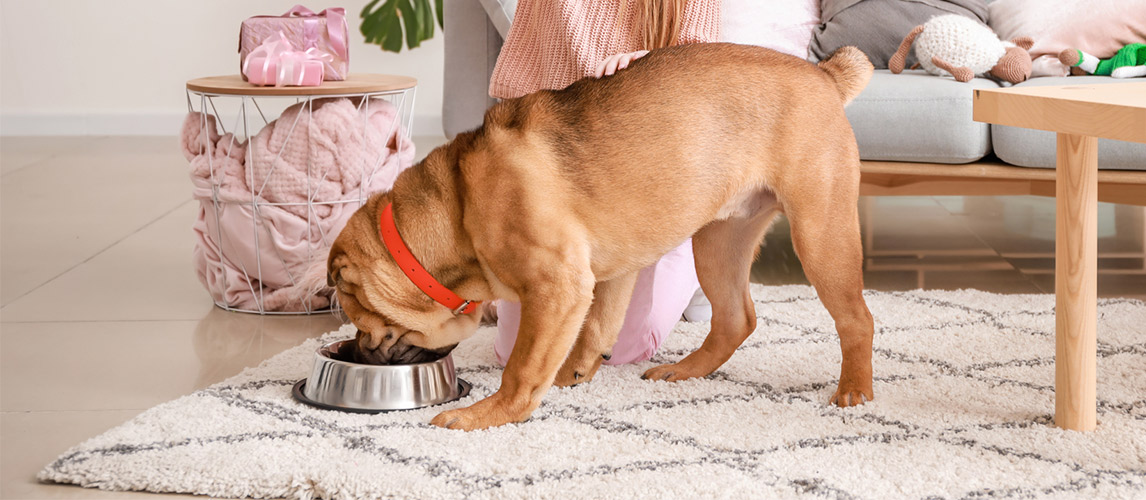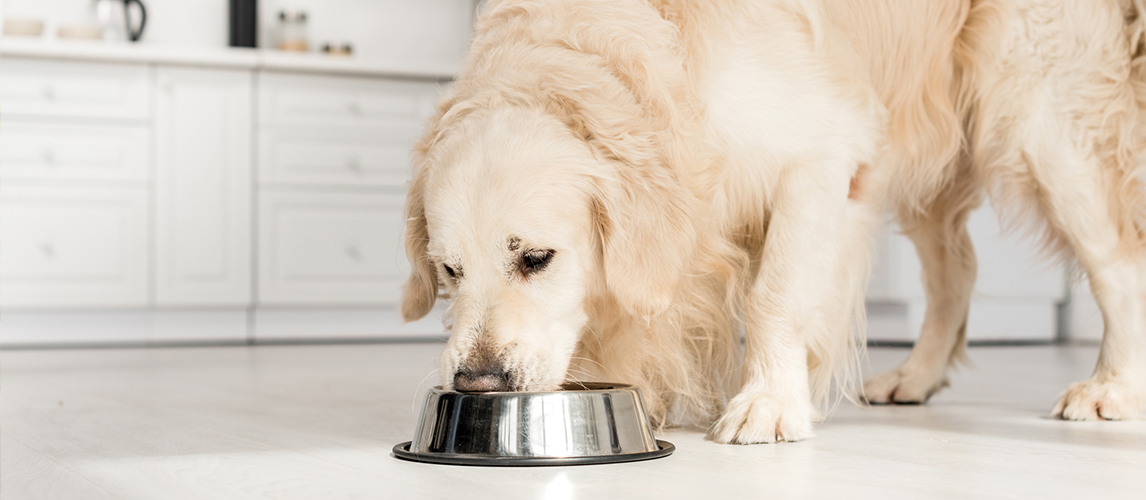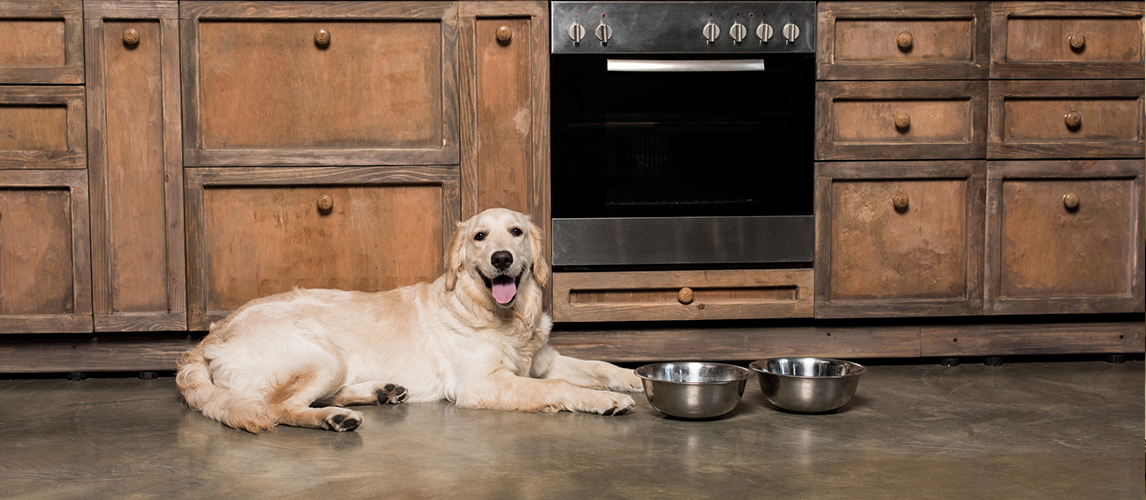If you’re wanting to give your dog a delicious treat that won’t make them pile on the pounds, bone broth may be the perfect way to go. Not only does bone broth for dogs give them a tasty change of pace, but it also makes an excellent meal topper for fussy pups that might be disinterested in their food. But how do you make bone broth and what exactly does it entail? Fortunately, we’ve broken down how you should go about making bone broth for your dog, along with providing a few simple recipes that are ideal for sensitive stomachs.
Key Takeaways
- Bone broth should never contain garlic, onion, chive, or leek.
- Bone broth is high in nutrients, vitamins, and minerals.
- It can help to keep a dog hydrated as well as encourage better eating habits.
- Bone broth has a wealth of health benefits.
- It can be frozen in an ice cube tray and used during hot weather.
- It can be made with either pre-cooked or raw animal bones.
What is Bone Broth?
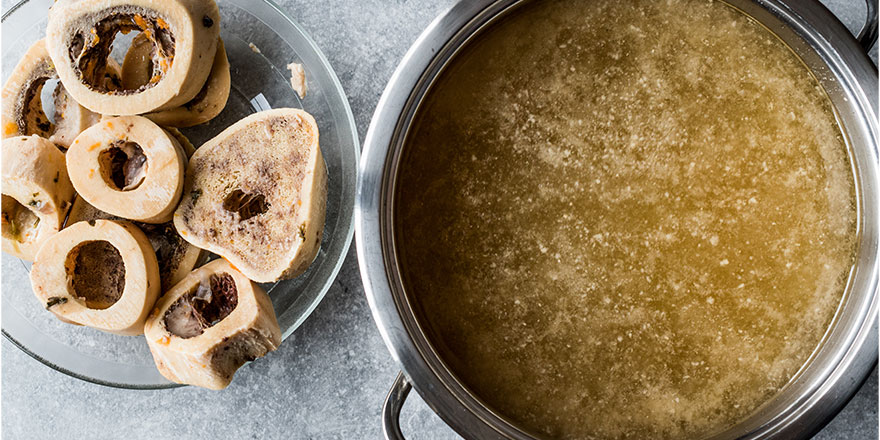
Bone broth is effectively a soup or stew created using the bones of one or more animals. This could be pork, beef, lamb, bison, chicken, duck, fish, venison, or anything in between. The leftover bones of an animal are packed with flavor that just needs to be unlocked. Fortunately, that’s easy enough to do if you follow a simple recipe. It’s also worth noting that bone broth should be made using bones that ideally have some meat still stuck to them.
Bone broth is often used by humans as a base for a delicious stew or gravy. In fact, many chefs like to create bone broth in order to freeze it for later use – a tip that will certainly come in handy if you’re thinking of making some for your own pup. Additionally, when you freeze the bone broth, the frozen blocks can be used as ice cubes in particularly warm environments, especially if you have yourself a rather fully pooch.
It can be served as a delicious and refreshing side dish, or as a topper with your dog’s dinner to create a wet food that your dog is more likely to enjoy.
The Health Benefits of Bone Broth
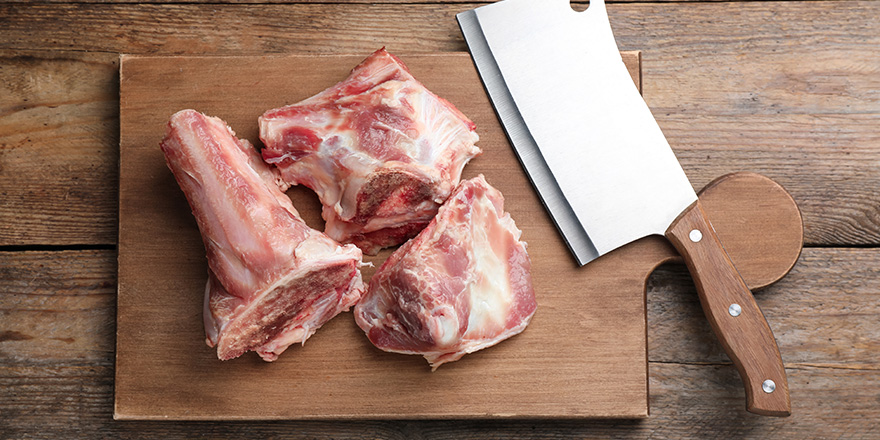
When you feed bone broth to your dog, it acts as a rich source of essential nutrients that help with their overall body function. Listed below are just a few of the health benefits of adding bone broth to your dog’s food:
- Healthy gelatin and calcium provide joint support, relieve joint pain, and boost joint health
- Strengthens connective tissues reducing the risk of injury
- Amino acids bolster the immune system
- Fiber and hydration help to support healthy digestion
- Helps them to maintain a healthier body weight
- Omega fatty acids and vitamin E support liver health
- Certain recipes contain additional ingredients such as ginger to help settle the dog’s stomach
How to Make Bone Broth
With making your own bone broth, cooked or roasted bones impart significantly more flavor into a bone broth than raw bones, whereas raw bones provide better nutrients. It is extremely important that when you are done making the broth you DO NOT feed your dog-cooked bones from the leftovers. Cooked bones are more likely to break off into shards that have the potential to cause serious harm and digestive distress to your canine companion.
Ideally, you’ll want a slow cooker for creating a bone broth, however, it’s equally possible to make using a stockpot or even just a large saucepan (so long as you adjust the recipe to fit comfortably in your chosen pan).
Bone broth is pretty easy to make as most of the effort goes into prepping the ingredients as opposed to the actual creation of the broth. Though it does take many hours to cook once it’s all been combined, so start it at the beginning of the day. Here are the key points for making a bone broth:
1. Roast the Bones
This is only if you’re WANTING to roast the bones. Each recipe does it differently, but roasting the bones well with a little seasoning before creating the broth will massively boost the flavor of the finished product. You could even use chicken feet, pig’s feet, and poultry bones – they all get fished out at the end anyway! Raw bone provides more nutrients, whereas cooked bone has more flavor.
2. Prepare the Vegetables
Try to stick with simple but effective vegetables like celery, carrot, sweet potato, butternut squash, broccoli, green beans, or beets.
3. Combine the Bones and Vegetables in a Pot
Whichever pot you decide to use, be it a stockpot, slow cooker, or large saucepan, combine the ingredients in the pot. Don’t worry about mixing them together, the flavor of the broth will be the same regardless.
4. Add Any Desired Extras
If you’re thinking of adding a bit of extra flavor, you can add rosemary, parsley, or oregano to the mix. Do NOT add salt or pepper. You could even add apple cider vinegar or olive oil to make a delicious broth with some added health benefits.
5. Boil Together on a Low Simmer
This will take between 9-24 hours depending on your cookware, with occasional stirring to avoid sticking and check the liquid levels. Slow cookers take around 20-24 hours on low, the stovetop can take between 9-12 hours. An instant pot will only take around 3-4 hours.
6. Prepare to Serve
Once the liquid has changed to richer color and it’s smelling delicious, remove any bone marrow from the bones and add it to the mix (safely disposing of the empty bones). You’ll also want to remove any herbs sprigs or leaves from the finished broth.
7. Serve and Store
Once you’ve served up the broth you wanted to use put the rest in jars or an air-tight container and store it in the refrigerator for up to 7 days. You can also freeze the excess broth in ice cube trays or bulk tubs for later use if you’ve made too much to use immediately.
A Simple Bone Broth Recipe For Dogs
Now that you know the technique behind making bone broth, here is a simple recipe you could use for your own homemade bone broth creation. Bone broth for dogs needs a simpler recipe than the standard human bone broth as additional ingredients such as salt and garlic can be extremely irritating to your dog’s digestive system. Beef bone broth for dogs is usually easier to make as the bones are more readily available – plus, dogs love beef!
Bone Broth Recipe
This is a raw-bone recipe (no pre-roasting needed) and can be chicken bone broth, beef bone broth, or any protein of the individual dog owners’ choosing.
Ingredients:
- 3-4 lbs Animal Bones (this could be beef bones, chicken bones, pork, bison, venison, turkey, rabbit, oxtail, etc)
- 2 ounces Parsley
- 3 inches Ginger Root
- 2 Carrots
- 2 stalks Celery
- 1/4 cup Organic Apple Cider Vinegar
- 6 quarts Water
Method:
- Roughly chop the carrot and celery and finely chop the parsley and ginger root.
- Combine all ingredients into your preferred pot (ideally, one that will fit everything in at once, if not, adjust the recipe accordingly or split it between multiple pots)
- Cook on low heat with a lid on the pot for between 12 and 24 hours. A slow cooker will take much longer, whereas the stove-top typically takes around 12 hours. Stir regularly.
- Remove the bones, being sure to scrape any loose marrow or meat back into the broth. It is up to you whether you would like to strain out the vegetables or keep them in as more of a soup-like texture. Dispose of the bones properly and well out of reach of your dog. DO NOT feed the used bones to your dog.
- Allow the broth to cool completely – this can be done in the refrigerator – and skim away any fat that rises to the top once fully cooled.
- Store bone broth in a cool, dry place. It can be kept refrigerated for up to a week, or frozen for up to 6 months.
FAQs:
It's best to stick with average servings of around 1 ounce for dogs under 20-pounds of weight. For dogs weighing between 20 and 40-pounds, you could up this to around 2 ounces a day. Dogs that weigh between 50 and 80-pounds could enjoy up to 4 ounces per day. Where dogs weighing over 80-pounds could have up to 6 ounces of bone broth.
Yes! Introducing a bit of bone broth to your dog's diet can not only help with hydration but a good homemade bone broth for dogs is nutrient-dense, encourage a healthy gut, and support your dog's immune system.
NO. Under no circumstances should you let your dog get hold of the cookie leftover bones. Cooked bones are extremely dangerous for dogs as they can splinter whilst being eaten and cause serious harm to your dog. Cooked bone can also cause significant digestive distress.
Yes. It most certainly can help to hydrate a dog. This is especially true if your dog is unwell and being evasive when it comes to drinking their water (as we all know it's pretty much impossible to get a dog to drink if it doesn't want to). Bone broth is almost irresistible for dogs as it contains such a rich and natural flavor.
We'd suggest trying your local butchers. Often butchers will have offers on raw bones, or may even have scraps that they're willing to part with for owners looking to make a homemade bone broth. Alternatively, some superstores also offer raw bones at the meat counter. Beef marrow bones are ideal for a flavorful bone broth.
Both are absolutely fine. However, if you're looking for maximum flavor, it's best to roast raw bones before using them in a broth. Alternatively, you can use the bones from a roast you've recently made - making use of the leftover and providing your pup with a tasty treat at the same time. Just be careful that there is no garlic, onion, chive, or leek on the bones before using them as they won't agree with your dog's digestive system.
Yes. It's absolutely fine to create vegetarian or vegan broth for your dog so long as you avoid the usual dangerous foods such as garlic, leek, chive, and onion. These vegetables can lead to bloat, diarrhea, sickness, and in severe cases, death. This means, if you chose a pre-made vegan broth for your dog, you much be sure to check the ingredients list as onion and garlic are extremely common ingredients in pre-made vegetarian flavor packets.





